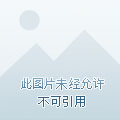Hello everyone! I am the Legend of A Blocker.
Speaking of Wang Mang, my first thought was: This dude is a strange thing!
This dude's childhood was lucky and unfortunate. Fortunately, he was a member of the Wang family, a foreign relative of the Western Han Dynasty, and was born with a golden spoon; unfortunately, his father died early. The Wang family was a foreign relative family that was in power at that time, and most of the people in the clan lived in a luxurious and beautiful way. The exception was Wang Mang, who was humble and frugal, a corporal of courtesy, and a prestige in the government and the opposition.
In December 8 AD, Wang Mang replaced Han Jianxin and carried out the "Wang Mang Reform System". In 23 AD, the Green Forest Army invaded Chang'an, and Wang Mang died in the rebellion. Xin Mang was only 15 years old, and the short-lived Qin Empire (221 BC to 207 BC) can be described as a difficult brother.
So, what did Wang Mang do, turning a good hand of cards into a chicken feather?
We will not talk about the other contents of Wang Mang's reform system, such as advocating public ownership and guaranteeing production to households; prohibiting slave trading; setting up price bureaus and supervising the market; and so on.
From 7 AD to 14 AD, Wang Mang carried out four currency reforms.
The first time: 7 A.D., the Book of Han: "In May, more goods were made: the wrong knife, which has been five thousand; the deed knife, which has always been five hundred; the big money, has always been fifty, parallel to the five baht money." That is to say, on the basis of the original five baht money, Wang Mang added Daquan Fifty, Qi Dao Wu Bai and One Knife Ping Five Thousand (one of the two words was made of gold, so it was also called the Golden Wrong Knife). Looking at the name, you know that a big spring is exchanged for fifty five baht, a knife is exchanged for a five-baht, and a knife is exchanged for five thousand five-baht. This dude really dares to build it! You should know that at that time, it belonged to the weight currency, although the actual weight of the five baht and the weight of the book were decoupled, but it was not very outrageous, buddy you came up with a Wu Bai, five thousand, obviously are inflated value of big money, attracting private minting. You dare to build, who dares to receive!

Izumi Isty
Oizumi Fifty (Transmission)
One knife flat five thousand (golden wrong knife)
The second time: In 9 AD, Wang Mang abolished the five baht, the Qi Dao Wu Bai and the one knife flat five thousand, only retained the Big Spring Fifty, and the newly created Koizumi Naoichi, Koizumi Naoichi weighed one baht, and fifty Koizumi Naoichi equaled one Big Spring Fifty. In fact, it is equivalent to replacing the five-baht coin with Koizumi Naoichi, and implementing the main and auxiliary currency system of "Izumi Goods".
The third time: In 10 AD, the "treasure system" was implemented. The so-called "treasure goods system" refers to the "treasure goods five products", which includes five things, six people and twenty-eight products. "Five things" refers to gold, silver, copper, turtles, shells and other coins, "six names and twenty-eight products" refers to six products of spring goods, five products of shell goods, ten products of cloth goods, four products of turtle treasures, two products of silver goods and gold. The six products of the spring goods (six springs) are Koizumi Naoichi, The Eleventh Spring, the Twenty Young Springs, the Thirty Middle Springs, the Forty Zhuangquans, and the Fifty Great Springs; the Ten Articles of Cloth (Ten Cloths) are one hundred Small Cloths, two hundred Cloths, Three Hundred Young Cloths, Four Hundred Sequential Cloths, Five Hundred Chabu, Six Hundred Medium Cloths, Seven Hundred Zhuangbu, Eight Hundred Second Cloths, Nine Hundred Second Cloths, and Yellow Thousand Large Cloths. It's really dazzling, too complicated currency system, so that the people are confused! Wang Mang stopped the "treasure goods system" and restored the "spring goods two products" system.
Koizumi Naoichi
Large yellow dry cloth
Fourth time: In 14 AD, Koizumi Naoichi and Oizumi Fifty were abolished, and new casting cloth, cargo spring, cloth spring and national treasure Kanekaku Naowan were newly cast. The National Treasure Gold Canon can be exchanged for one of 10,000 Koizumi or one pound of gold. The original purpose of the reform was to stabilize the value of the currency, but as a result, each time it evolved into a plunder of the people's wealth, losing the hearts of the people, and Wang Mang's end was doomed!
Cargo cloth
Cargo Springs
Cargo Spring (Chuan shape)
Wang Mang can't be emperor, the restructuring has made a miasma of smoke, and the people are not happy! But making money is indeed a good hand, most of the coins he issued are of fine copper quality, the money is beautiful, and the hanging needle seal created by his regime is a masterpiece of calligraphy! So far, the six springs, ten cloths and national treasures such as the golden treasure are worth tens of thousands of dollars, which are deeply loved and sought after by coin collectors!